There’s always been a bit of snobbery in the world of film photography. Unlike digital cameras, where the latest megapixel monster hanging over your shoulder is like a flashing neon sign, a film camera could last you your entire shooting career. The brand thus became the equivalent of today’s megapixel count – an indication of how serious (read “good”) of a photographer you really were. In that not so long ago era, for the most part, Nikon was “pro” and Canon was not quite, quirky brands like Alpa were interesting, and Leica was as good as it got. And perhaps still is…?
In that stratified world, the Yashica FX-3 was humble, indeed. It was a camera for the family shooter or the amateur on a very tight budget. Simple, utilitarian, the Yashica SLRs definitely didn’t (and doesn’t) turn heads, unlike the more popular Yashica TLR’s or even the Yashica Electro 35 rangefinders.
But in the current upsurge of interest in film photography, where some prices are reaching silly money levels, a clean, well-kept Yashica SLR may represent the best value for the photographer looking to channel the 1970s and 1980s. They are simple, unpretentious cameras that are light, easy to handle, have bright viewfinders, and have a full line up of good to excellent lenses, all of which can be had for the price of a few bricks of Kodak Portra 400. A mid-1980s Yashica FX-3 like the one I own (thanks to my wife, who bought it new to take to college) can be purchased on eBay for between $50 and $100. For that price, I can buy a new lens hood for one of the Olympus primes the I use with my digital work kit. Mine still has its “Passed” quality control sticker, a sure sign of those times.
My camera came with a Yashica 50 mm F2 ML. I filled out the kit by picking up two Yashica lenses – a sweet 24mm F2.8ML, and a 135mm F2.8 ML C. Both are built like lenses used to be built – out of metal, with smooth manual focusing and aperture rings. Current auction site prices: the 24mm is going for under $200 for a clean copy, the 135mm is an even better deal at under $100. Total value for the three-lens kit: about $350 if you paid a premium for condition. It should be noted that the FX-3 body was built by Cosina, of recent Voigtlander fame, in fact using the same basic all-manual design that will be familiar to anyone who has purchased a Cosina Voigtlander Bessa M-mount rangefinder.
My FX-3 lived a gentle life. My wife didn’t use it much, and for most of its life sat in its hard case in a closet. When I came along, like most Yashicas of that era, it’s body cladding had disintegrated. I sent the body and kit 50mm F2 to Yashica repair guru Mark Hama for a CLA and new body wrap. He worked on the Yashica assembly line as a young man in his native Japan. It’s gone to Hama-san once, to repair the shutter, which stopped working on a trip to Tokyo.
The camera hasn’t given me a problem since then. I used it recently as part of a personal project I’m doing on sacred places in Hawaii. It’s an all-film documentary project centered on the Ulupou Heiau, or ancient Hawaiian temple, and the people who care for the area and who are turning it into productive taro-growing lands again. My main cameras for the project are a large format Graflex Crown Graphic from the mid-1950s and a medium format Rolleiflex 2.8F, also of early 1980s vintage.
I used the Yashica on the day Kumu Hula Mapuana de Silva of Halau Mohala ‘Ilima and two of her daughters chanted and danced hula at the base of the three-story tall Ulupou Heiau. The kit’s main benefit – it’s light, with an easy-to-use diode indicator center weighted meter system. It has a flaw that’s common to many SLR’s of that era – mirror slap that can sound like a gunshot! When Kumu de Silva was chanting, my camera’s mirror slap was loud enough to be picked up by the video mics also shooting the moving scene. Kumu de Silva was a good sport and chanted again for the video crew. I kept my camera slung over my shoulder.
I loaded the Yashica with Kodak Ektachrome 100, the new stuff. Ektachrome in its various flavors was my film of choice from the 1970s until I went primarily digital in 2009. I ran this through the Arista E-6 home processing kit. Despite the kit being all but idiot proof, I had a minor screw up and got the two-developer order wrong. It was only for a few seconds but enough to slightly change some of the saturation. I decided to work with it and in post gave the final images a more vintage look.
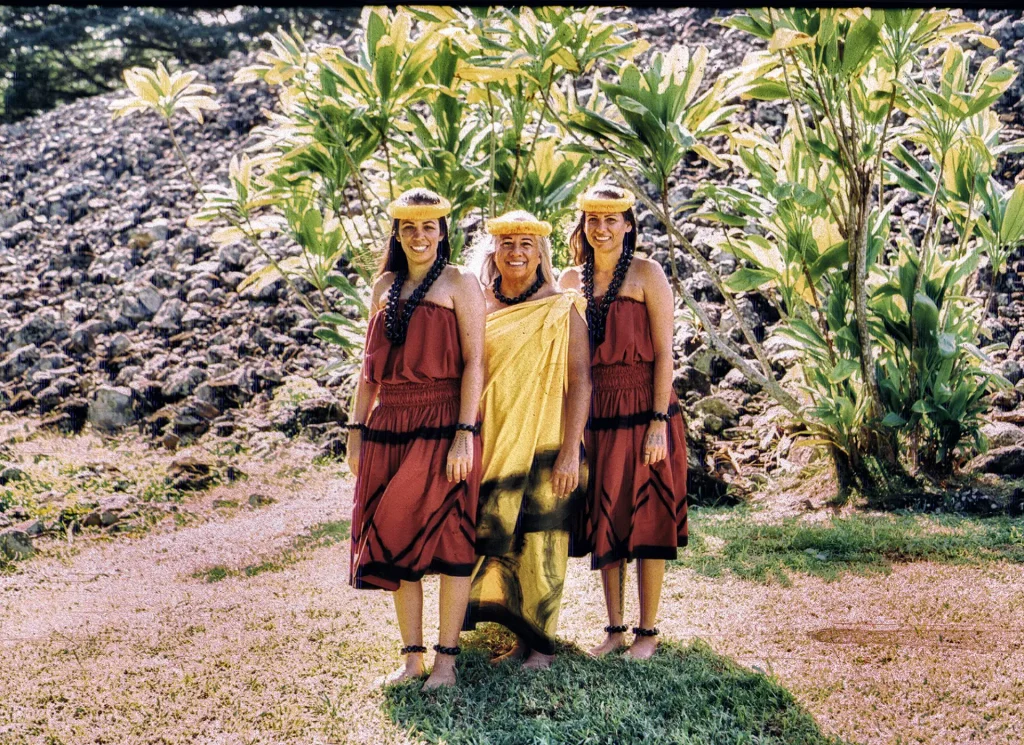
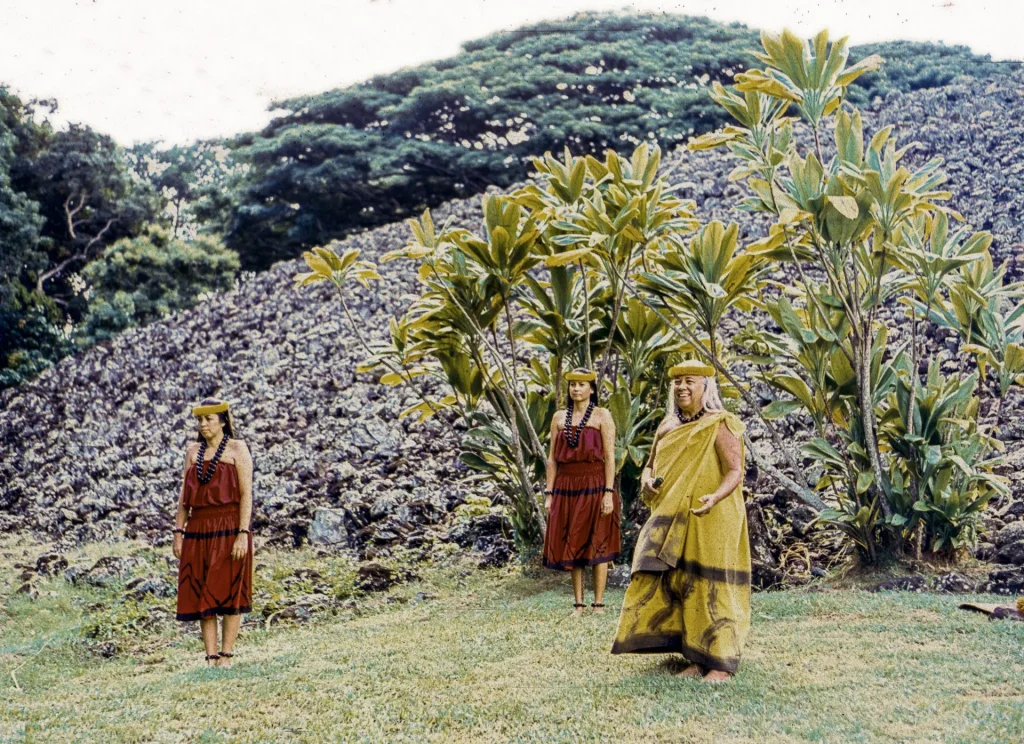
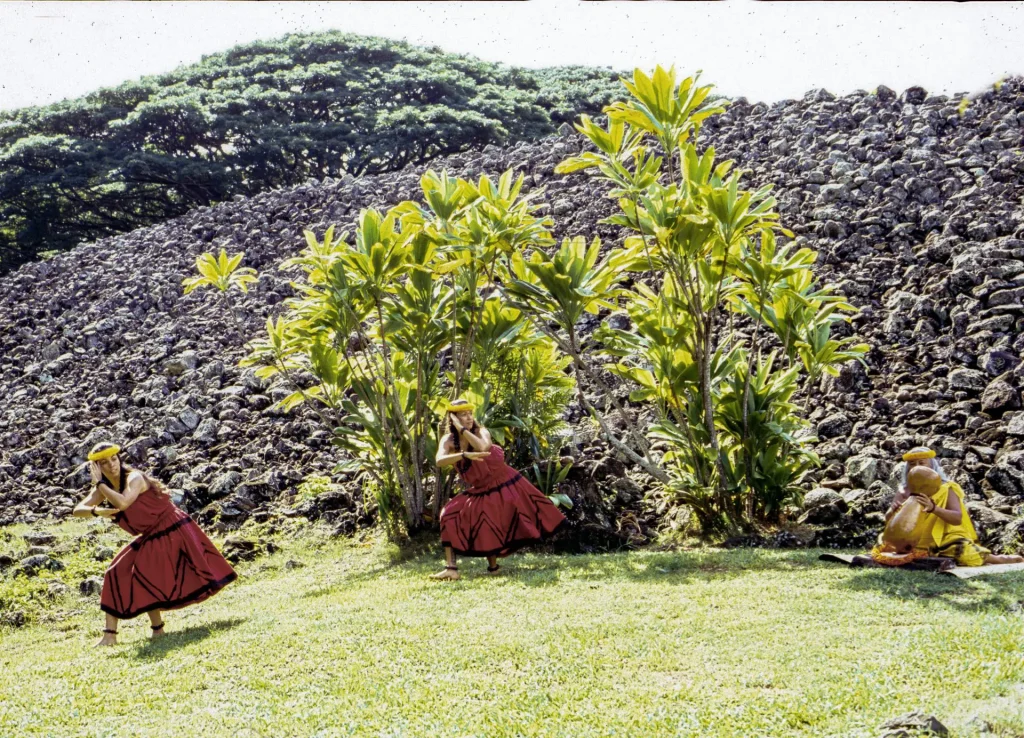
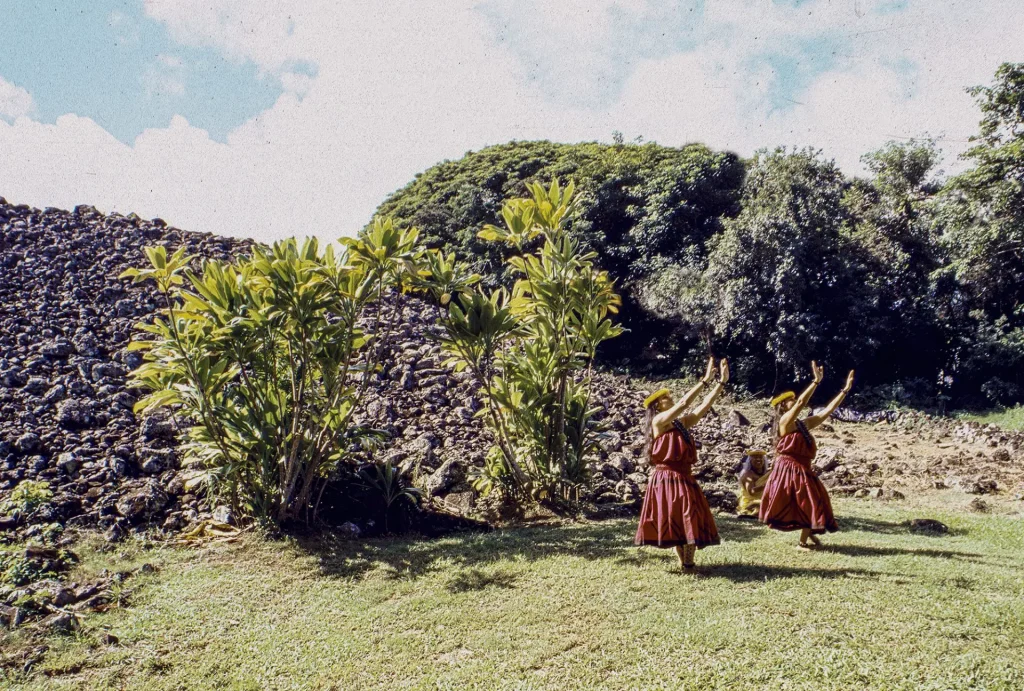
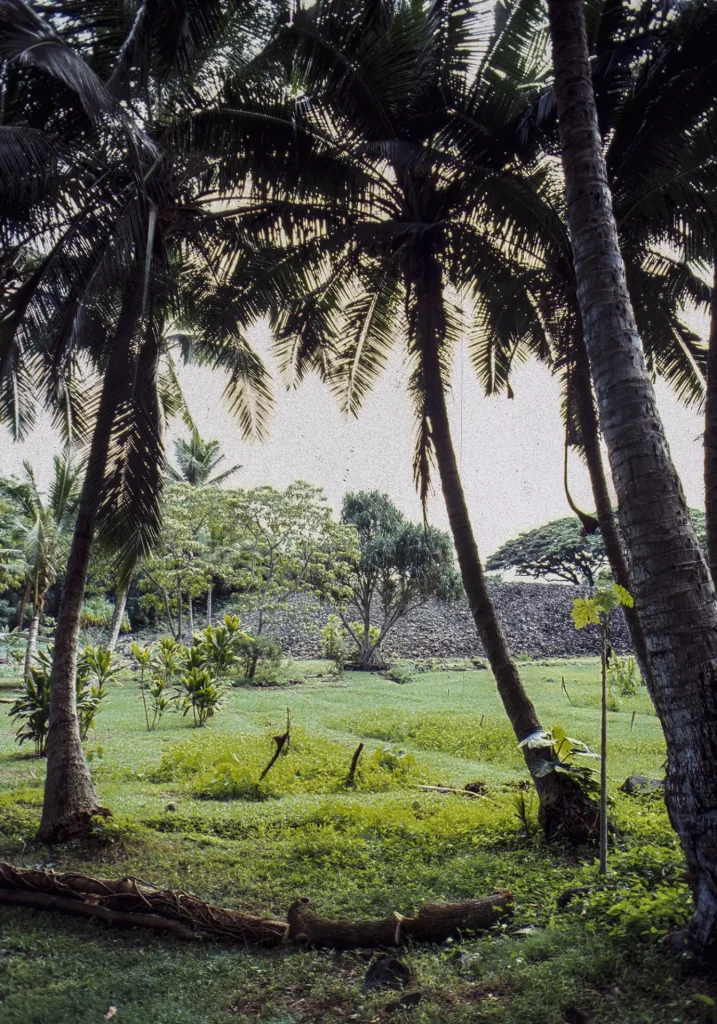
While the Yashica is an everyman’s brand, it can go uptown if you’re so inclined. The lens mount is known as a Contax/Yashica mount, which means the mount can take some expensive Zeiss glass if you have the means. For example, the Zeiss 85mm f/2.8 Sonnar commands prices between $300 and $400. And a rare gem like the Zeiss 35mm shift lens popular with architectural photographers goes for about $1,500.
A friend who is an architectural photographer just got one of those lenses to use with a digital medium format Fuji kit. He’s promised to let me borrow it soon. Meantime, I’m happy with my all-Yashica kit. It does what it’s supposed to do, nothing more, nothing less, and does it well with little fuss. A frugal film shooter can’t ask for much more.
Share this post:
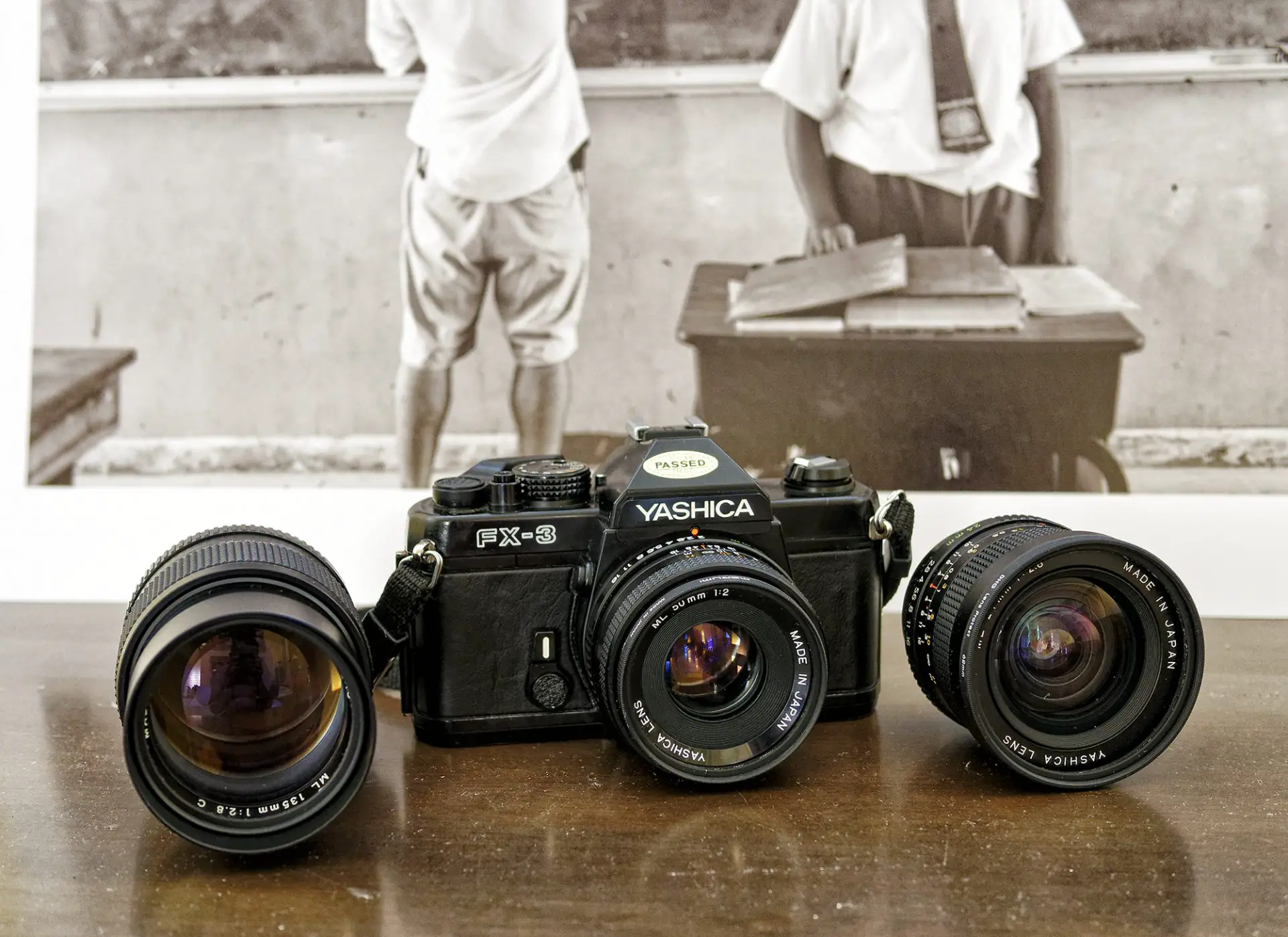








Comments
Ralph Turner on 5 Frames with a Yashica FX-3 & Kodak Ektachrome 100 – By Floyd K. Takeuchi
Comment posted: 13/01/2021
Adrian Cullen on 5 Frames with a Yashica FX-3 & Kodak Ektachrome 100 – By Floyd K. Takeuchi
Comment posted: 13/01/2021
Dave Donnelly on 5 Frames with a Yashica FX-3 & Kodak Ektachrome 100 – By Floyd K. Takeuchi
Comment posted: 13/01/2021
Comment posted: 13/01/2021
Lee on 5 Frames with a Yashica FX-3 & Kodak Ektachrome 100 – By Floyd K. Takeuchi
Comment posted: 13/01/2021
Rock on 5 Frames with a Yashica FX-3 & Kodak Ektachrome 100 – By Floyd K. Takeuchi
Comment posted: 13/01/2021
Dana Brigham on 5 Frames with a Yashica FX-3 & Kodak Ektachrome 100 – By Floyd K. Takeuchi
Comment posted: 13/01/2021
Michael McD on 5 Frames with a Yashica FX-3 & Kodak Ektachrome 100 – By Floyd K. Takeuchi
Comment posted: 13/01/2021
Joaquín Cervera on 5 Frames with a Yashica FX-3 & Kodak Ektachrome 100 – By Floyd K. Takeuchi
Comment posted: 14/01/2021
armando arias on 5 Frames with a Yashica FX-3 & Kodak Ektachrome 100 – By Floyd K. Takeuchi
Comment posted: 14/01/2021
Bryan Costin on 5 Frames with a Yashica FX-3 & Kodak Ektachrome 100 – By Floyd K. Takeuchi
Comment posted: 15/01/2021
Sacha Cloutier on 5 Frames with a Yashica FX-3 & Kodak Ektachrome 100 – By Floyd K. Takeuchi
Comment posted: 15/01/2021
Floyd Takeuchi on 5 Frames with a Yashica FX-3 & Kodak Ektachrome 100 – By Floyd K. Takeuchi
Comment posted: 15/01/2021
One other point that might be of some interest. As noted in brief, I use an Olympus micro four-thirds kit for my pro digital work. I picked up a lens adapter that allows me to use my Yashica glass on my M43 bodies. While it's an interesting exercise, I find that I don't enjoy the cobbled together feel of the combination. I was interested in Sacha saying he uses his CY mount lenses on a Sony A7II with an adapter. I've got to believe the bigger Sony bodies are a better match than the tiny M43 Olympus options.
Comment posted: 15/01/2021